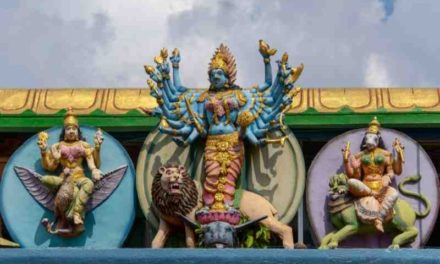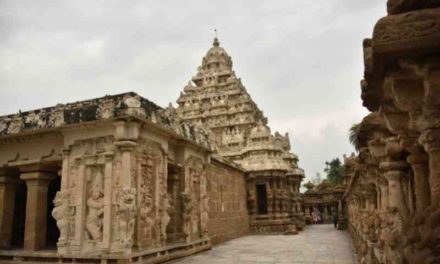Hindu religious rites contain a great deal of symbolic significance. The breaking of coconuts denotes the shattering of the ego, which is a condition for the attainment of enlightenment in the Hindu tradition. Because of the breaking of the ego, your mind will turn white like a shattered coconut, and the water contained inside it will be the nectar of Divine Knowledge.
This is how the ‘Nyasa Mantra’ is spoken in ceremonial Shastras.
Hold my hair back from my face, O God.
Look at me in the eyes with both of yours.
Removed with a single blow
Your lotus feet have accepted my skull in exchange for your blessings.
In a nutshell,
Coconut=head=ideas=misapplication of thoughts to claim doership (instead of using them to unravel the purpose of creation and to engage in it)=ahankara / bloated ego illusion=missing out on the spiritual dimension in ourselves
Breaking the coconut is the same as breaking ahankara, and eating the coconut’s delicious water and milk is the same as tasting God!!
Coconut is widespread in Indian culture, regardless of the religion practiced there. Due to the fact that every portion of it may be utilized for a variety of purposes, it is referred to as Shrifal in Hindu texts and worshipped as Kalpawriksha. Any pooja in Hinduism is considered incomplete if it does not include coconut. See what elements contribute to coconut having such a unique position in the world.
The typical life expectancy of a coconut tree is 70 years, however, it may live up to 120 years in certain cases. According to astrology, the average human life span is 120 years, which explains why the Vimsodhari dasa, or the Mahadasa of all nine planets, would take 120 years to complete.
As a result, the coconut tree is considered to be the same as a human being. In Tamil Nadu, the coconut tree is referred to as thennam Pillai, which literally translates as coconut kid, and it is never referred to as a tree, but rather as a child. In Tamil tradition, even the act of chopping down a living coconut tree is considered a sin and is akin to the act of killing one’s own kid.
A coconut tree may absorb every sort of water, from sweet groundwater too salty seawater, yet the fruit that it bears always yields only sweet water since it is produced by a tropical plant. This is comparable to the life of an ascetic or a mother, since only they provide good things to their followers and children in exchange for their sacrifice.
As a result, pregnant women are not permitted to crack open a coconut since doing so is equal to killing a living being, and the vibrations generated by breaking a coconut might injure the baby in the womb.
The head of the coconut is similar to that of a human: the hard shell is covered by unwanted hair, such as coir, and the eyes are covered by hard and sharp coir, which represents our pride.
The hard shell represents egoistic selfishness, while the sweet water represents humane nature, and the white sweet layer represents the purity of the soul. During pooja, one cracks open the coconut to represent the ego, selfishness, and pride that must be overcome in order for the soul to be exposed to God.
The coconut has three eyes and is a symbol of Lord Shiva, who is represented by the fruit. Hence, when any rite takes place in the presence of Shiva, the coconut is used as a witness to demonstrate that it took place in Shiva’s presence. Coconut has neither a beginning nor an end, and it represents Shiva’s physical manifestation.
According to mythology, when Vishwamitra saw an animal sacrifice or a human sacrifice during a Hindu rite, he was deeply touched. In order to put a stop to such life sacrifices, Vishwamitra instituted the practice of cracking open a coconut that looked like a live form. Since then, the cracking of coconuts has been a part of all Hindu rites.
The gift we bring to the lord must be completely free of impurities. Some believe that the scent of a flower indicates that it is unworthy to be offered as a sacrifice. The coconut is a tough and hardy fruit with a long shelf life.
Without outside assistance, it is difficult for the contents of the fruit, the kernel, and the water to come into touch with the natural environment. So the coconut is believed to be the purest and purest gift that human people can give to the deity since it has no impurities or additives.
A coconut is broken for a variety of symbolic reasons, including the fact that it represents one’s own head, notably one’s ego, which is represented by the coconut. During the act of cracking the coconut, the individual lets go of his or her ego and pride, which he or she may have gained or may gain in the future. When the ego is destroyed, it is only then that you may taste the delicious milk of success, or the actual fruit itself.





